| Vintage Pulp | Dec 26 2023 |

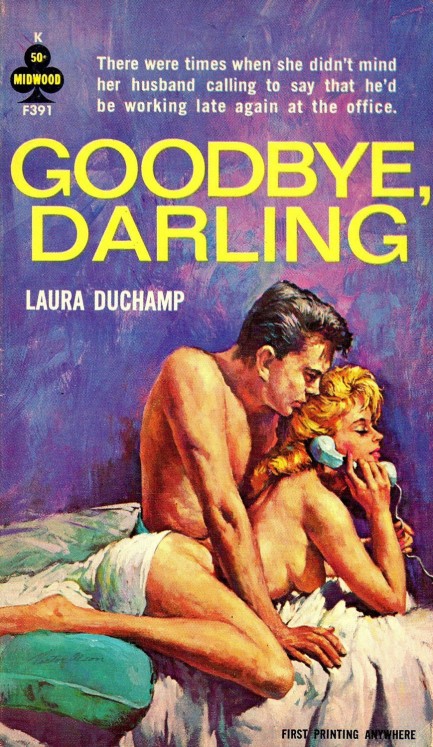
Another day, another ripe Midwood cover. The art on these are always like visual punchlines, which is why people love them so much. This particular effort is from Victor Olson, who painted covers for many men’s magazines, including Saga, Stag, Male and others. Laura Duchamp was a pen name used by author Sally Singer, one of the few sleaze writers who was actually female. She was also prolific as March Hastings. Goodbye, Darling appeared in 1964.
| Vintage Pulp | Feb 18 2022 |

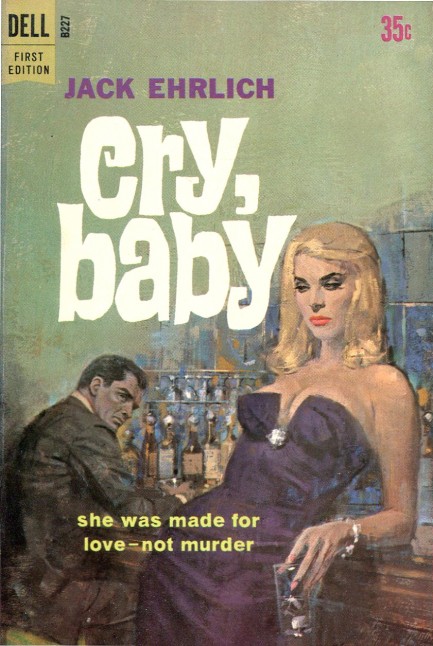
We have another paperback collection for you today, and this one is a no-brainer for a pulp site. There are hundreds of covers featuring women in bars, many of which we've already shared, such as here, here (scroll down), and here. Above and below are more, and as soon as we uploaded them we went to do exactly what the art depicts. Have a happy Friday, everyone.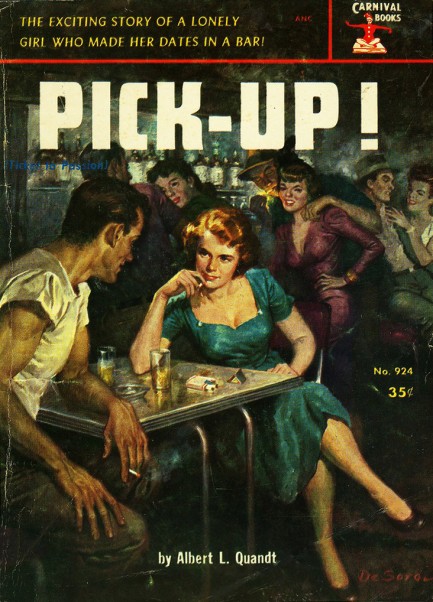
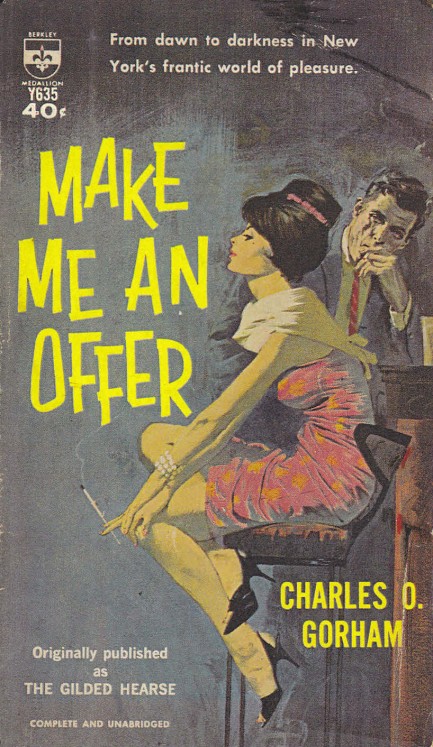
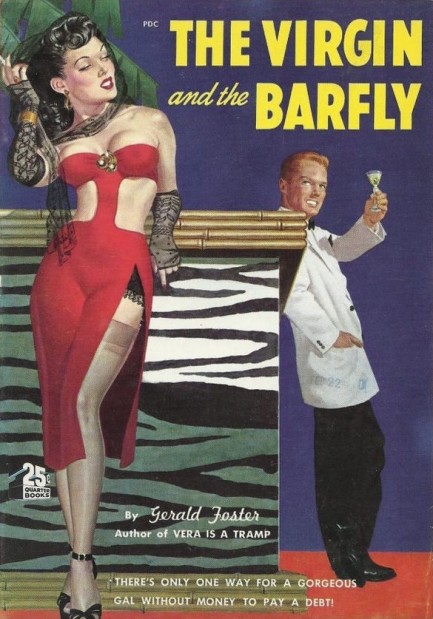
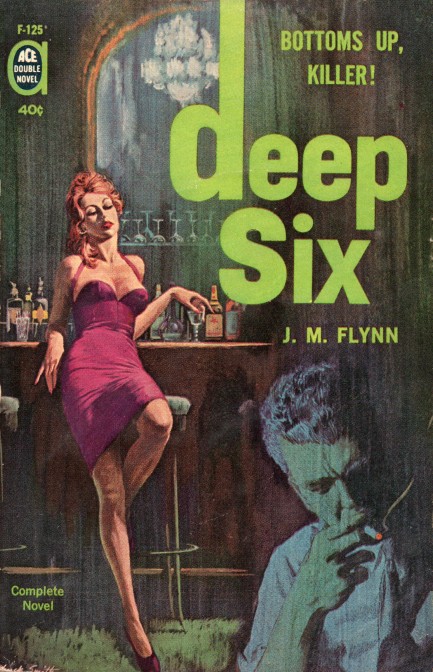
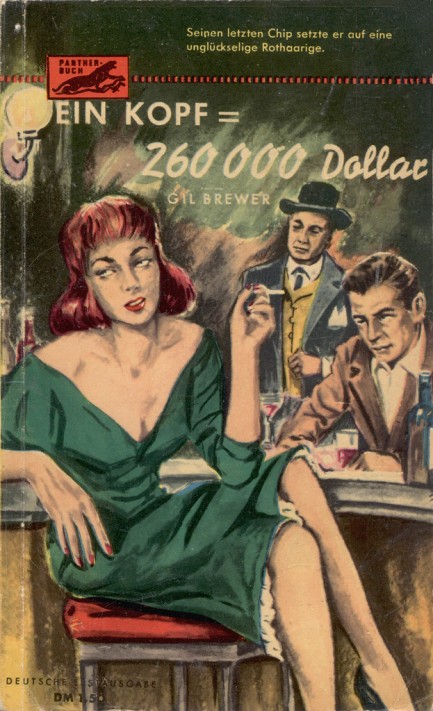
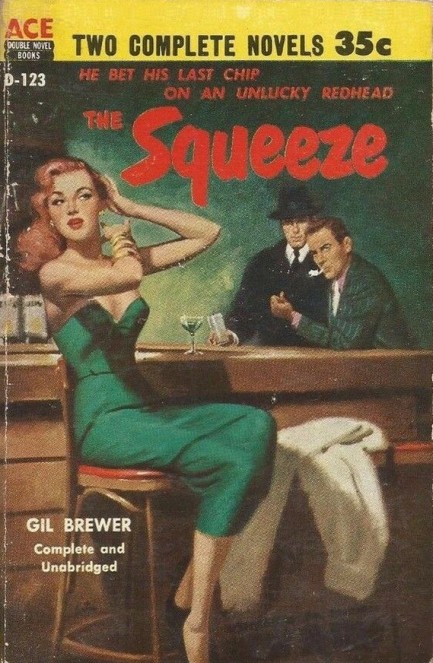
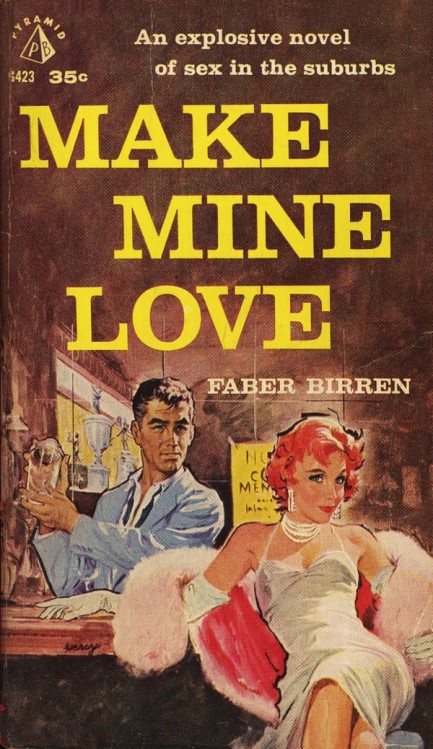
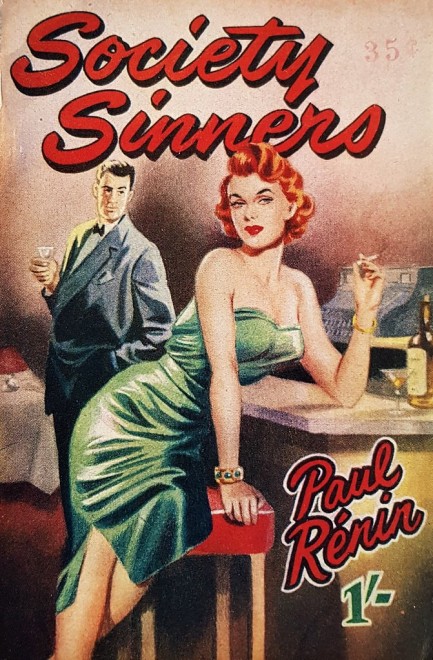
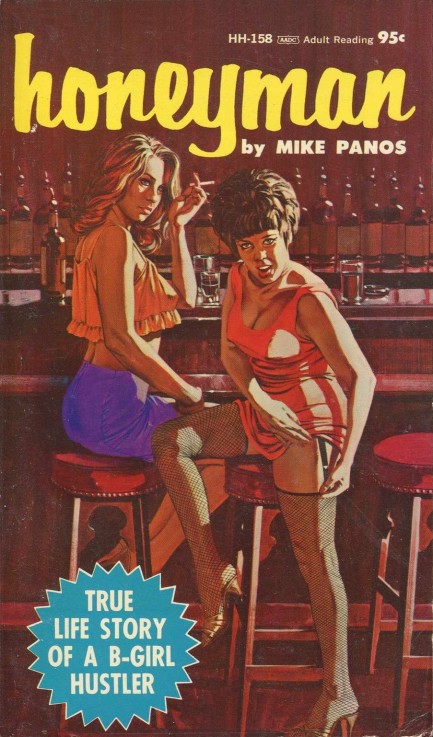
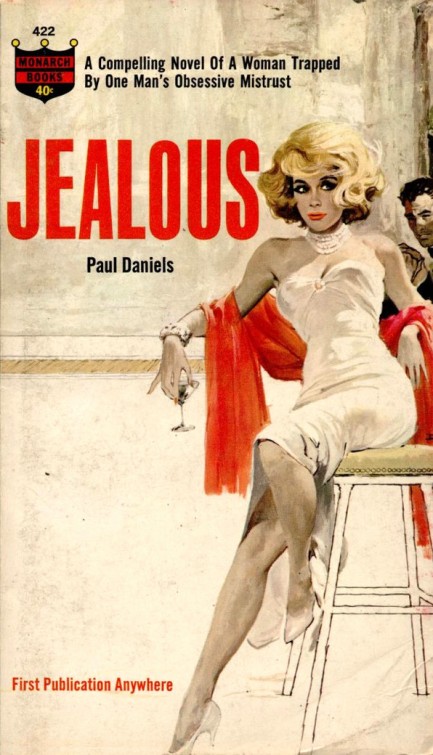

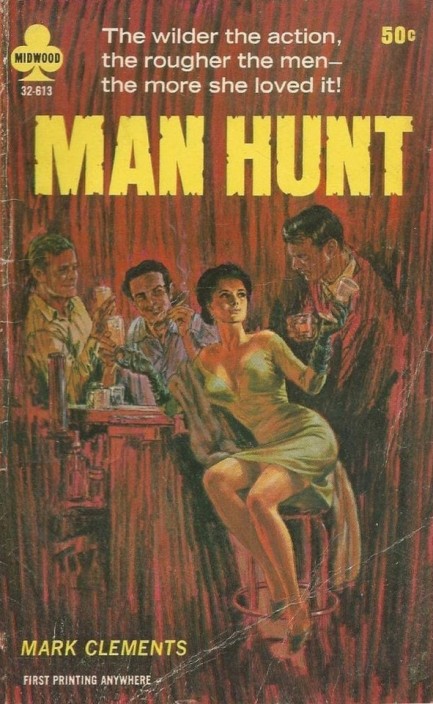
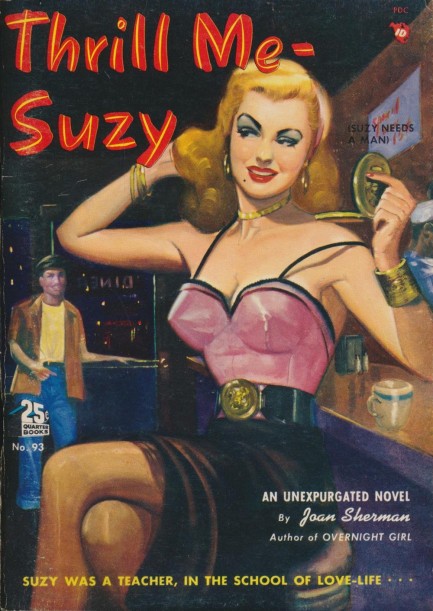
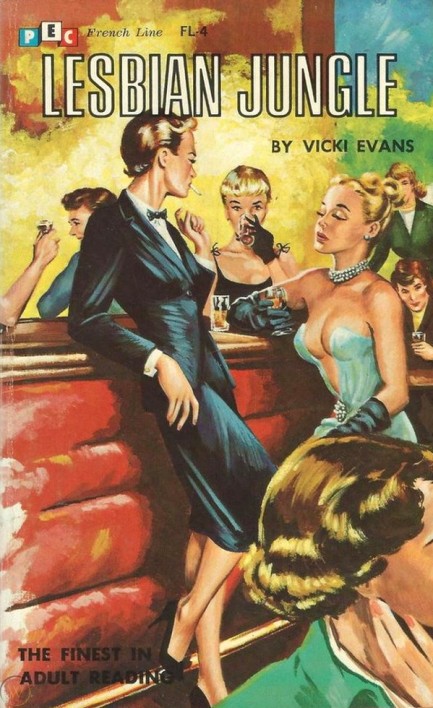
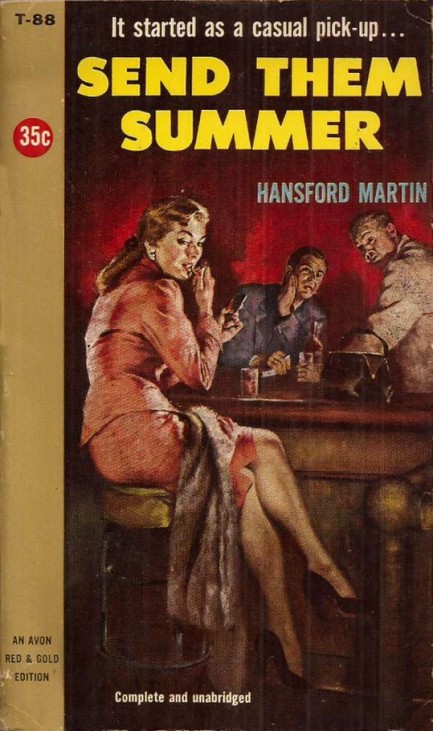
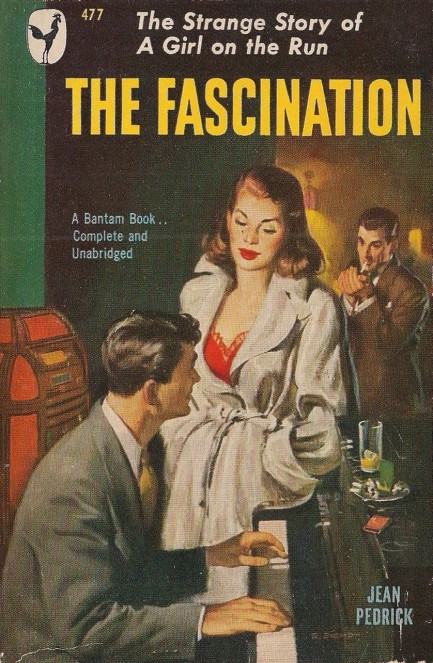
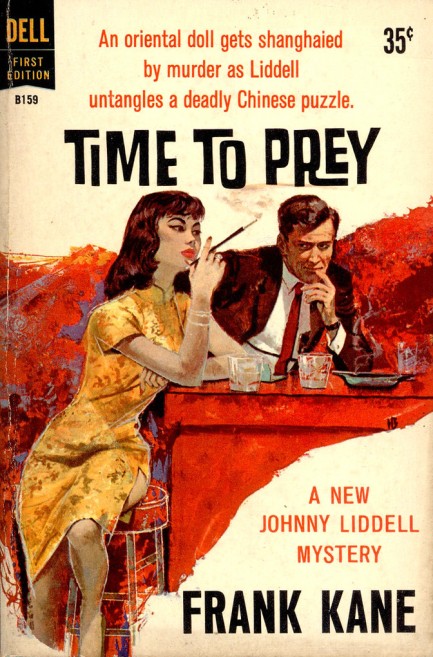
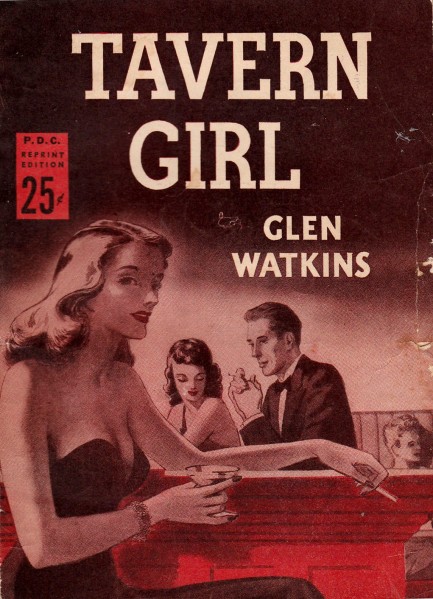
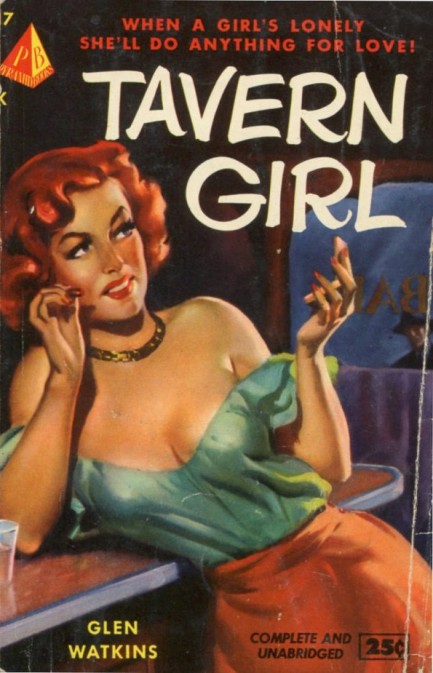
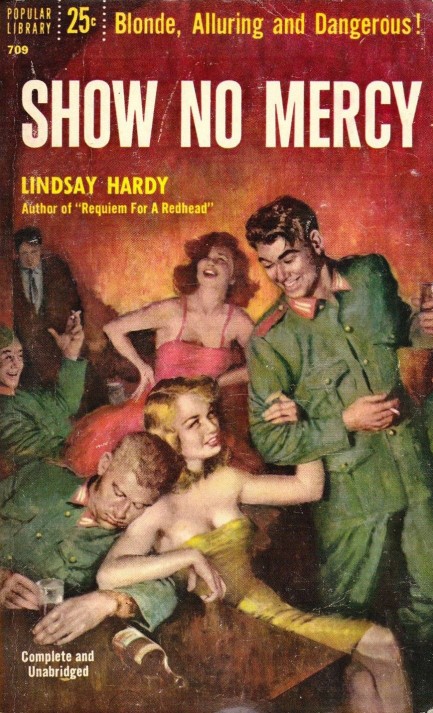
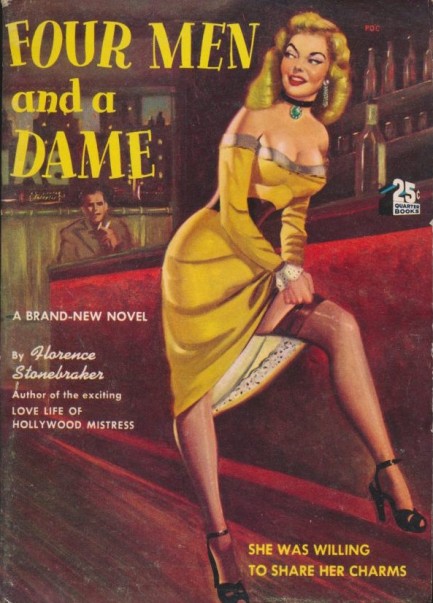
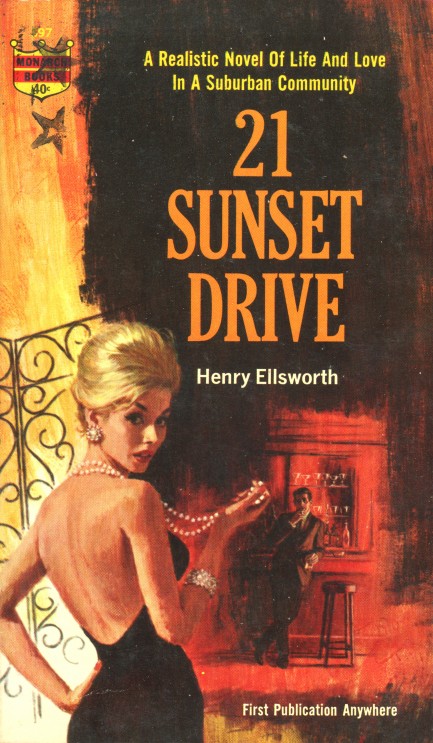
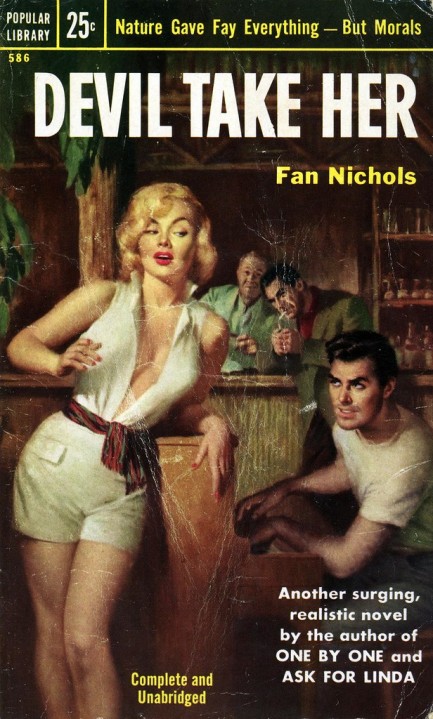
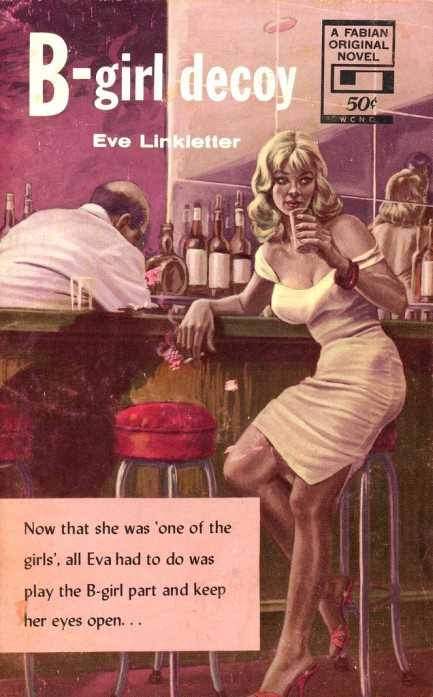
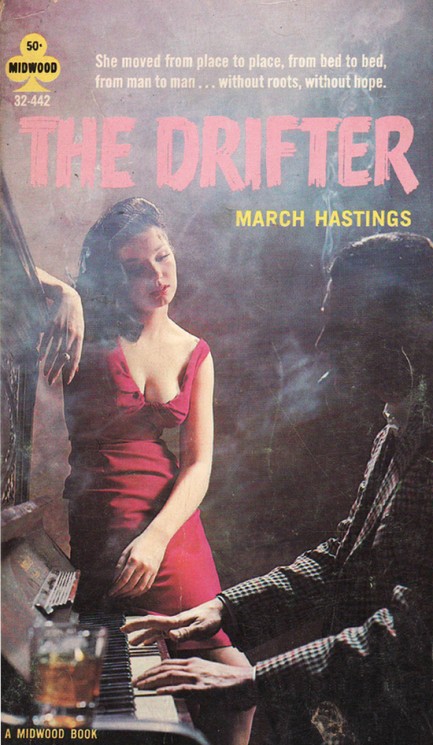
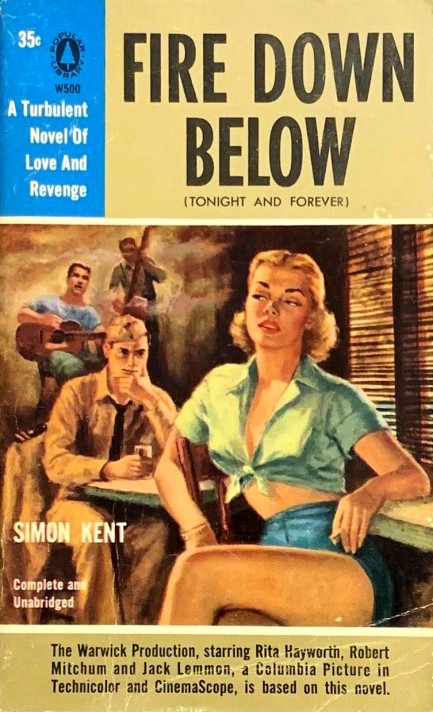
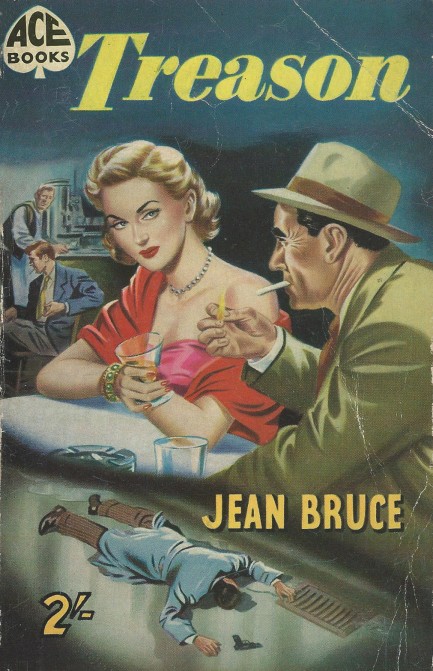
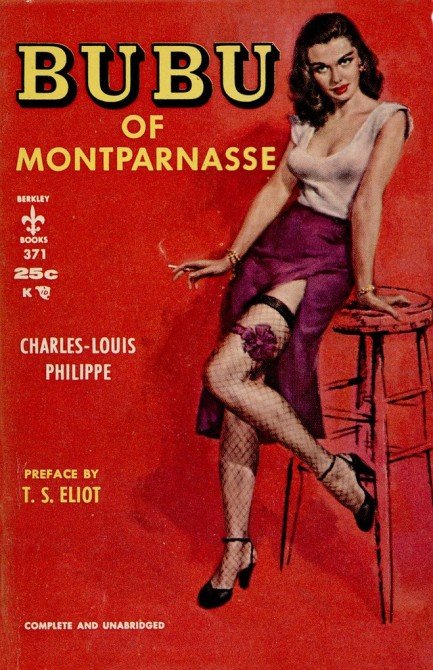
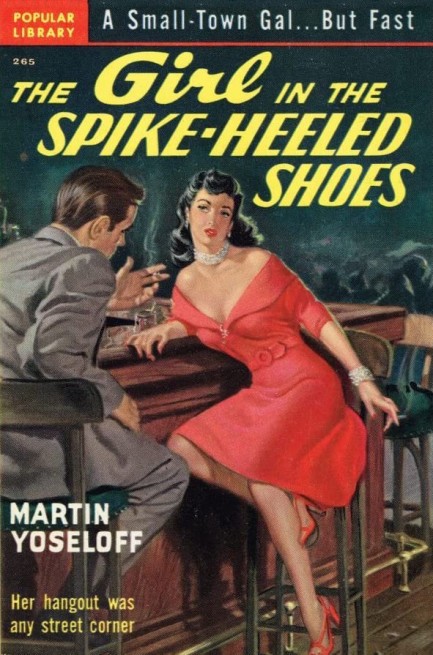
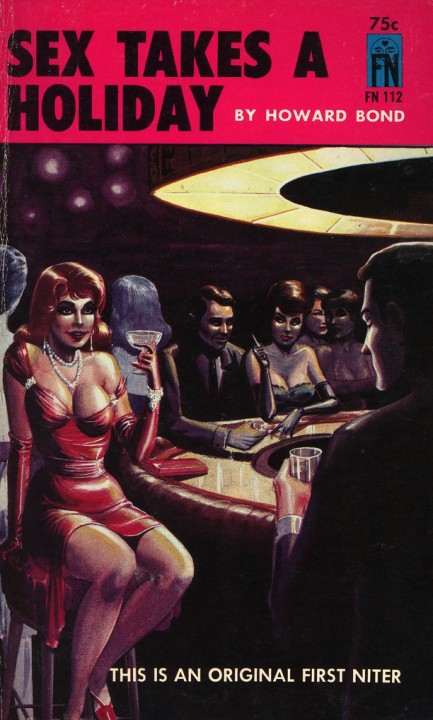
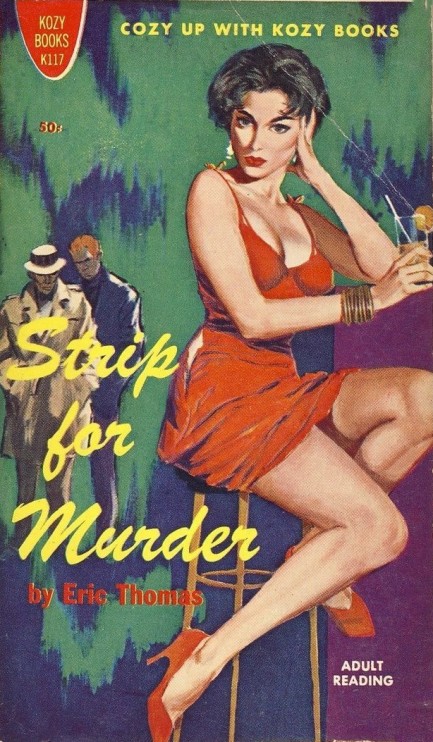
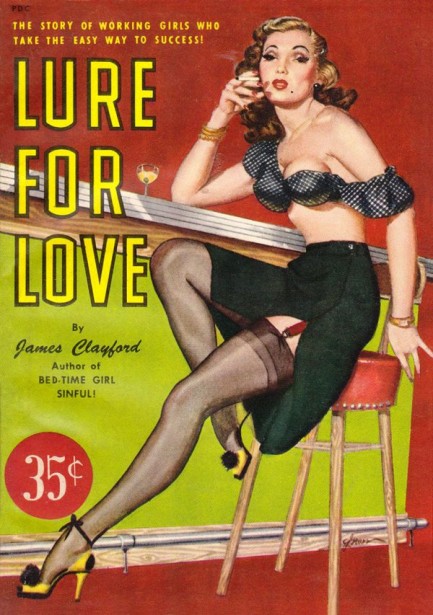
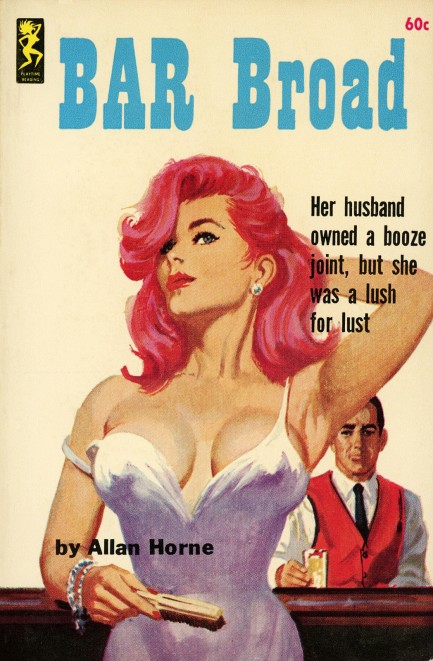
| Vintage Pulp | Dec 2 2019 |

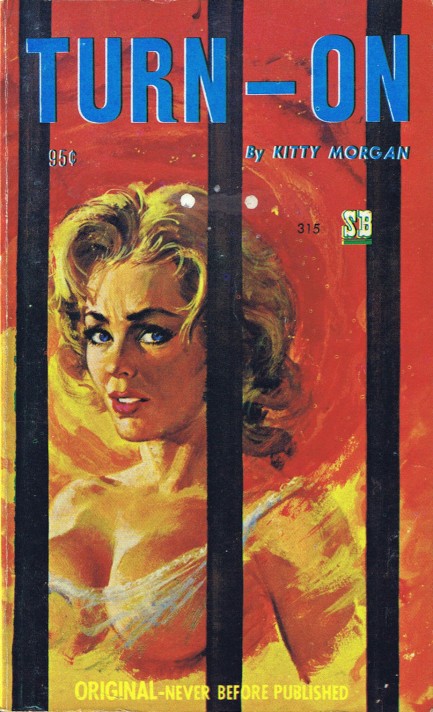
Here's a fun Robert Bonfils cover for Kitty Morgan's 1967's sleazer Turn-On. The art was recycled from March Hastings' 1962 book Design for Debauchery, with bars added to give the later art a jailhouse theme. It's kind of funny how shoddily original art was sometimes treated in efforts to adapt it for later usage: "Just paint some black bars over the earlier piece and we're good to go." We doubt Bonfils was the person tasked with defacing his own work, but you never know. In any case, the imagery makes us imagine some poor convict enjoying a beautiful cellblock daydream, which is then ruined when his fantasy girl says in a prison guard's baritone, “Hey convict! Who you think you eyeballin' like that?” As penal cover art goes, this is nice, but it isn't even in the same class as our favorite. Check here. 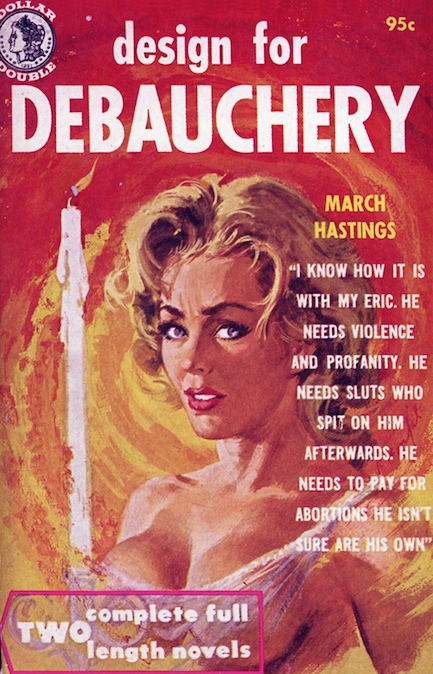
| Vintage Pulp | Jan 20 2018 |

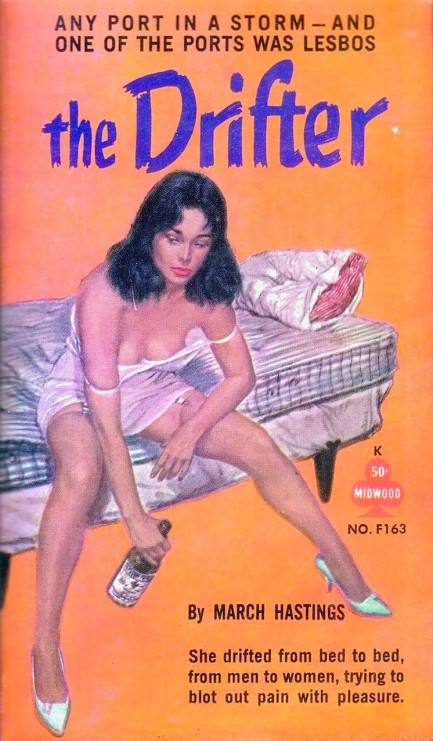
| Vintage Pulp | Mar 25 2017 |


Above, a cover for a rare triple novel featuring the sleaze work of Joan Ellis, Jill Hammond, and March Hastings. We like how the stories cover three different stages of life—Teen-Age Sex Party is high school, Office Playmate is the working world, and Experiment in Adultery is married life. A follow-up triple included Middle-Aged Miscreants, Retired but Desired, and One Dick in the Grave. Well, not really. But we missed our calling, don't you think? The cover art here is from Paul Rader, and the copyright is 1968.
| Vintage Pulp | Mar 1 2017 |

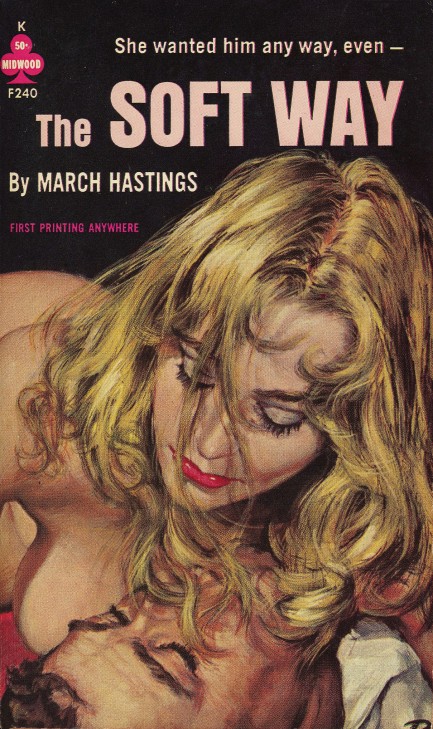
What is “the soft way,” according to the author March Hastings, aka Sally Singer? It's not having to make any effort. For instance, life can be “soft” for a guy. The main character in The Soft Way, who's named Jeff, has three girlfriends and life is definitely soft for him. So the cover blurb basically means the female character has to take Jeff on his own terms. It has nothing to do with the need for pharmaceutical intervention to do it the hard way, as implied by our subhead. But maybe it should—we bet the book would be especially interesting then. 1963 copyright on this, with Paul Rader art.
| Vintage Pulp | Jul 28 2016 |

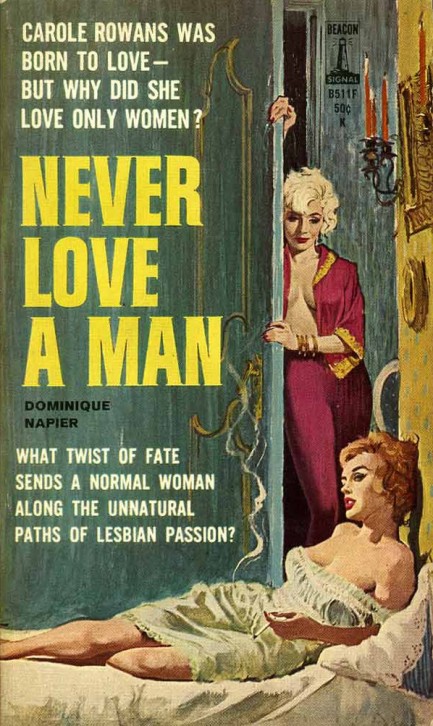
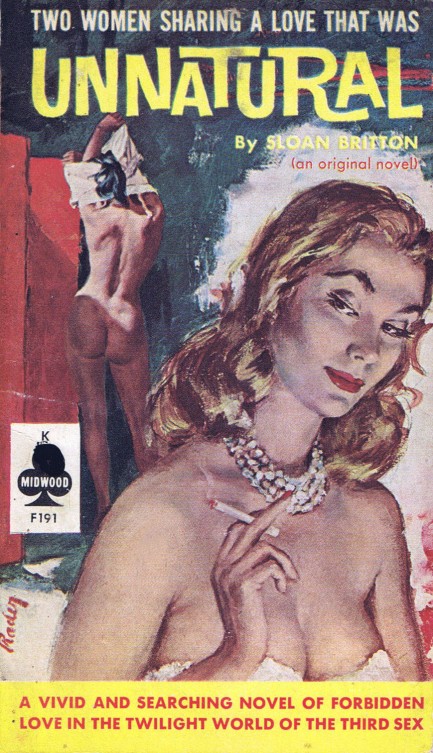
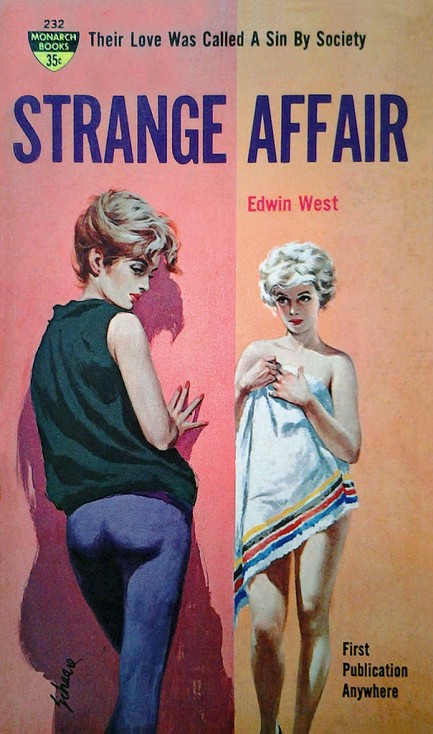
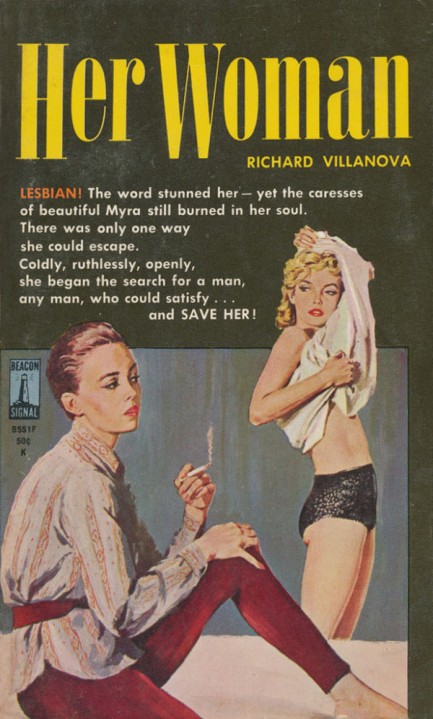
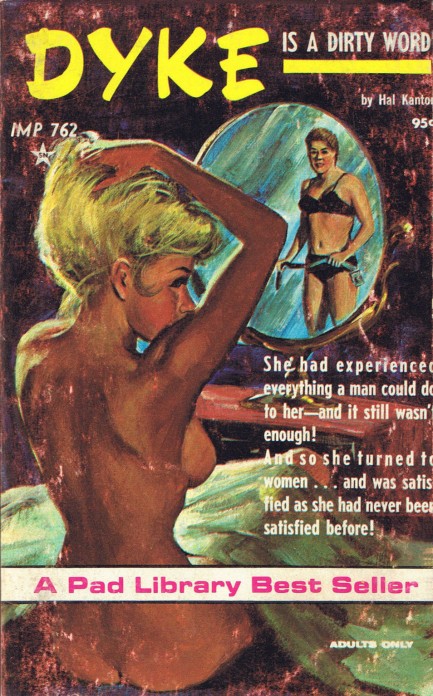
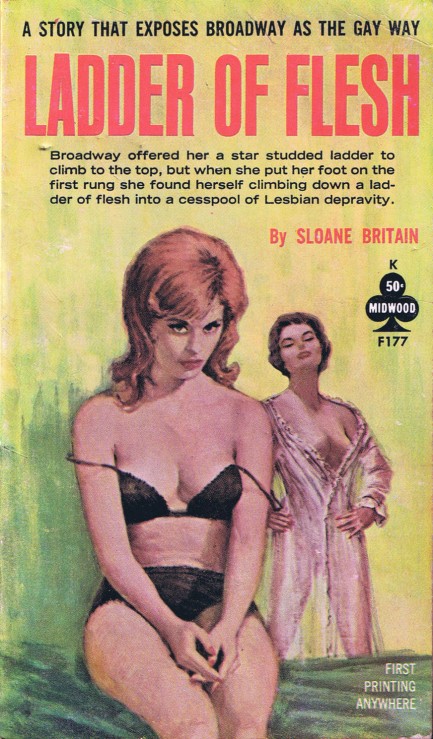
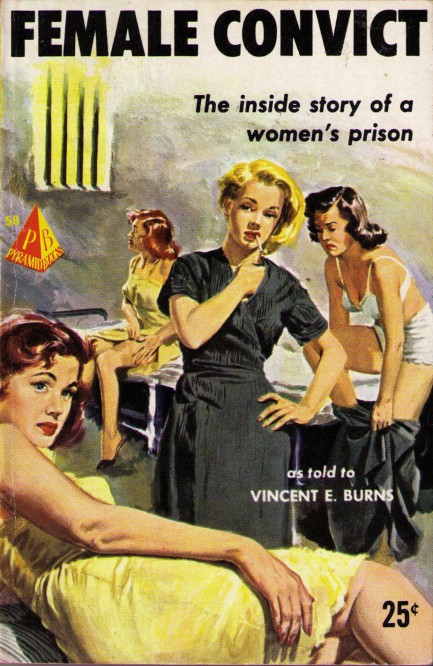
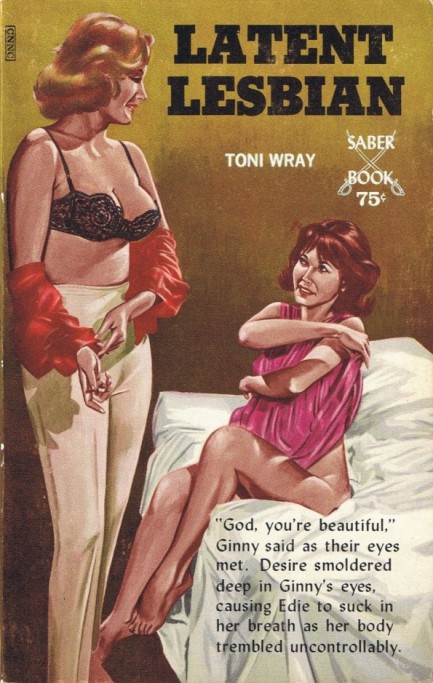
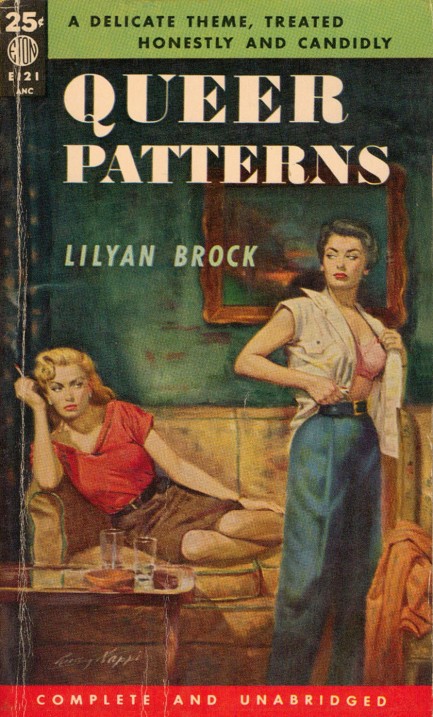
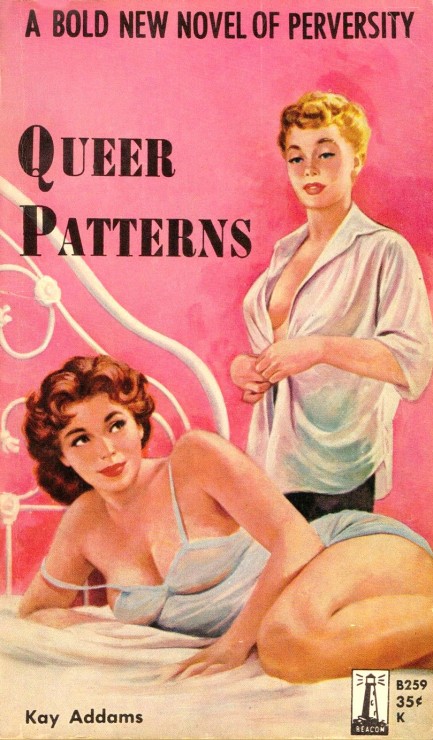
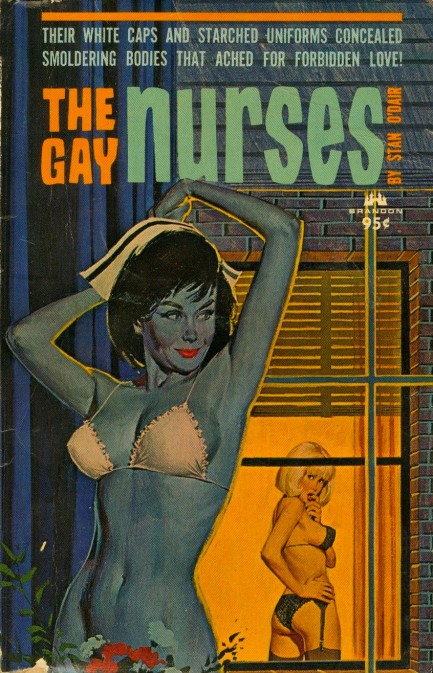
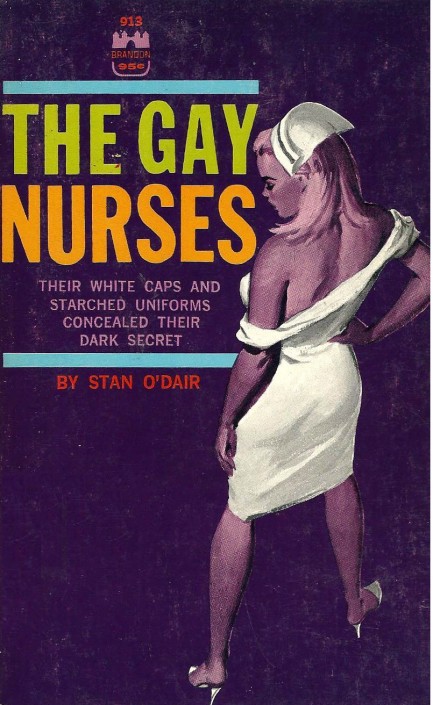
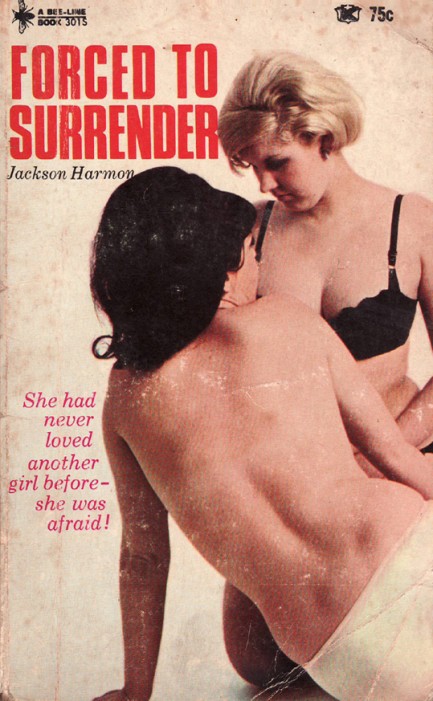
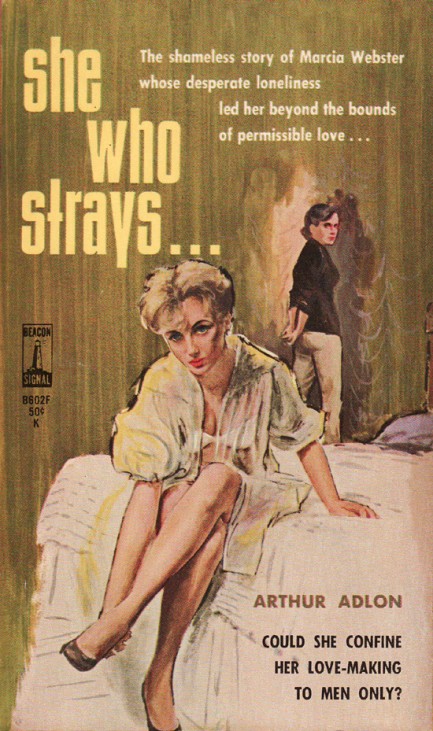

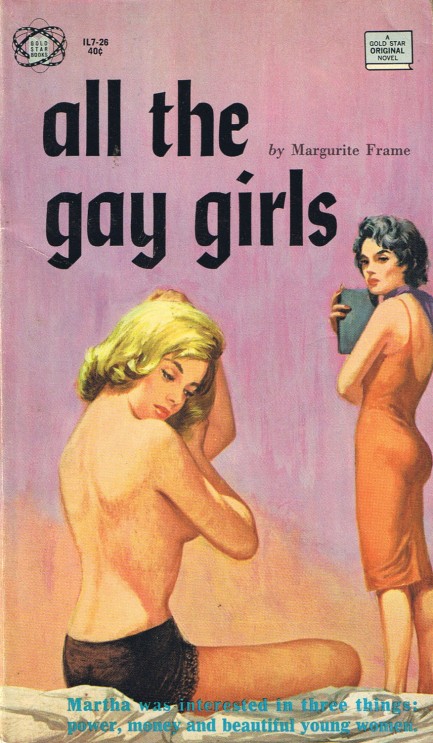

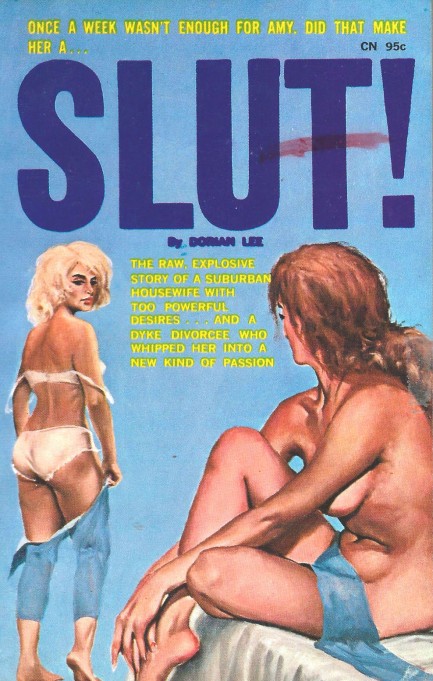

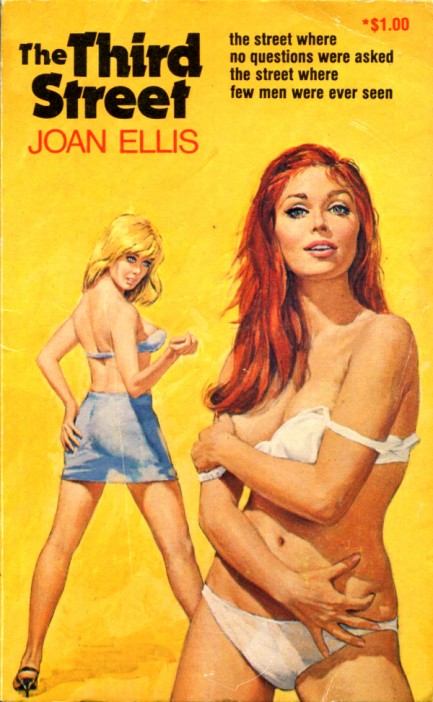
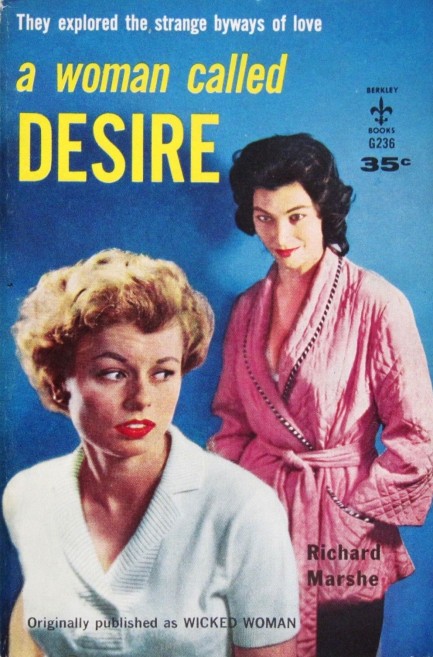
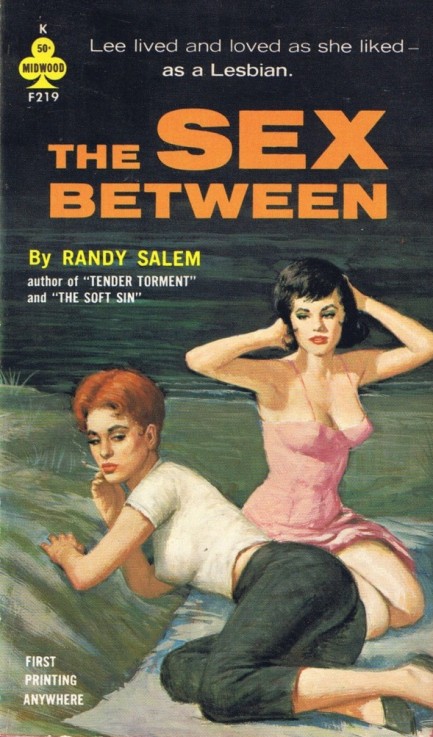
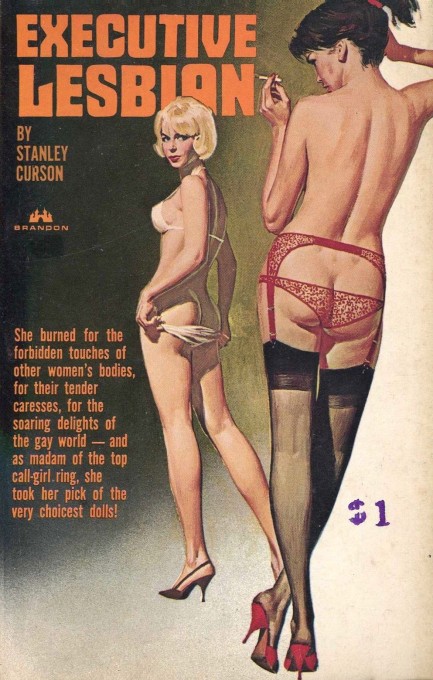
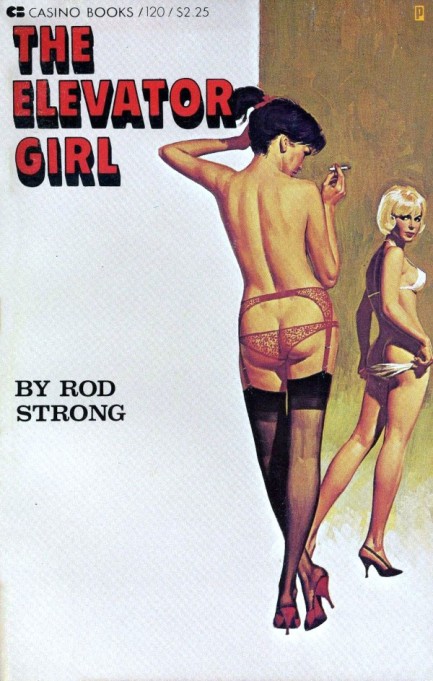
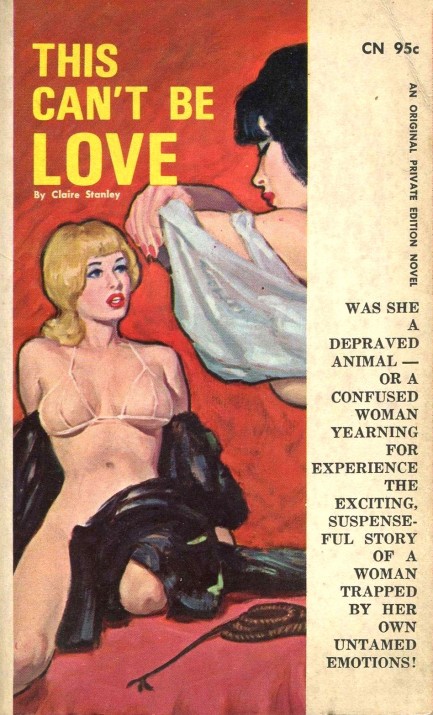
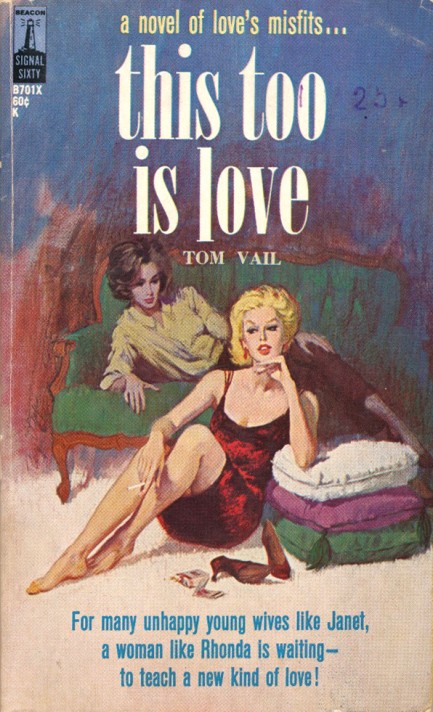
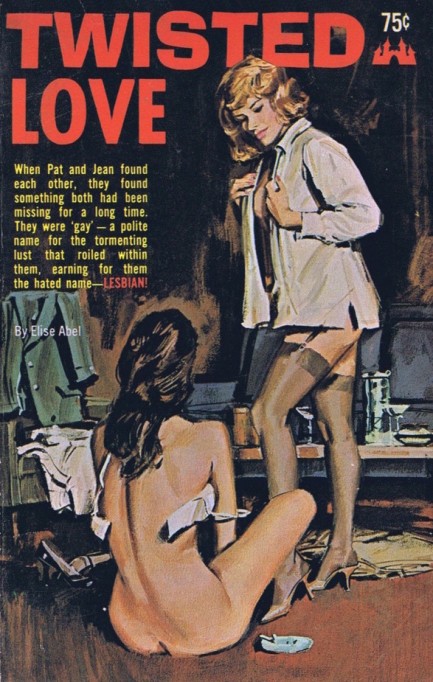
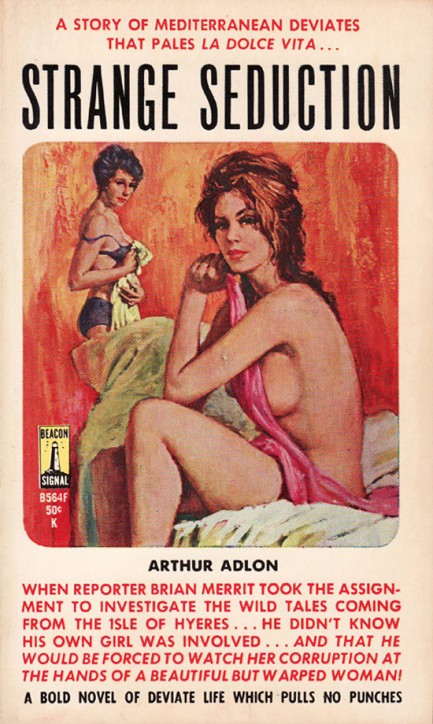
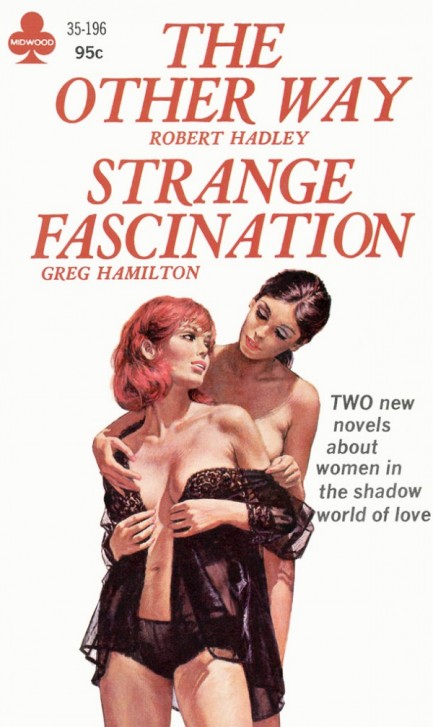
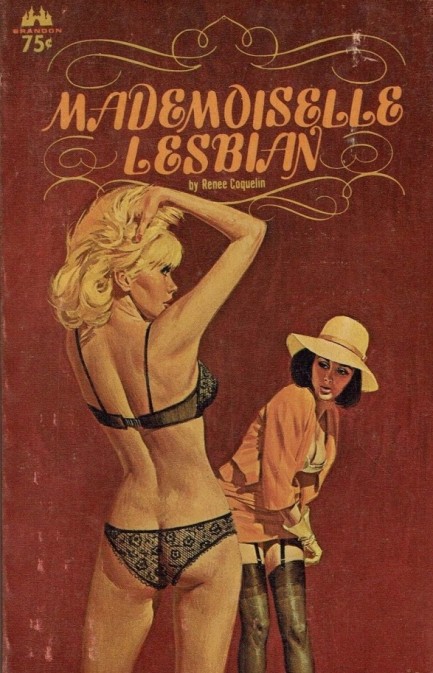
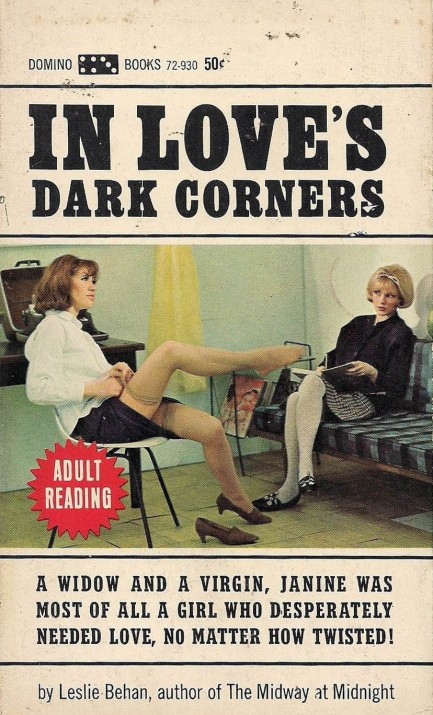
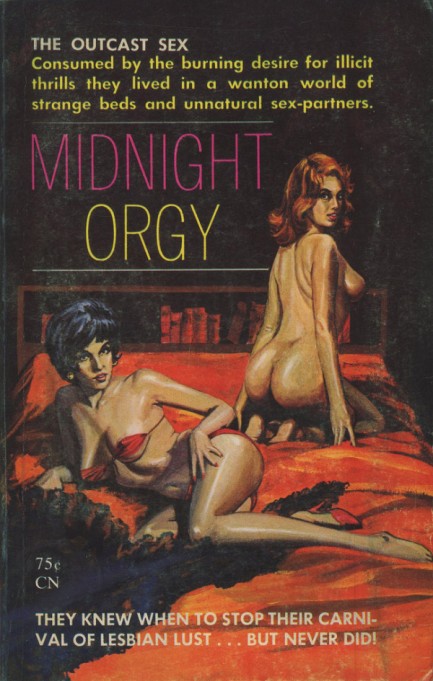

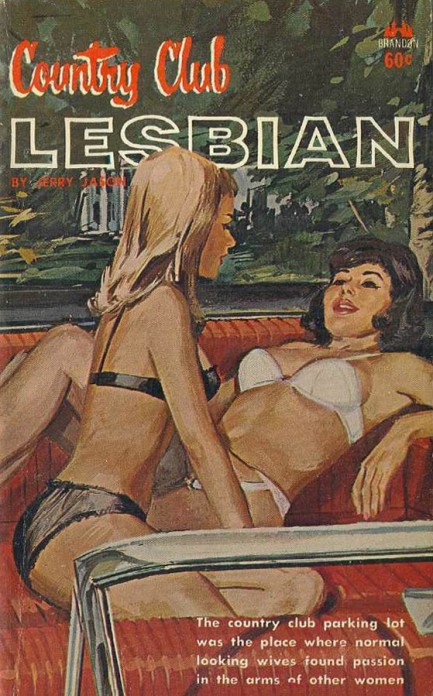
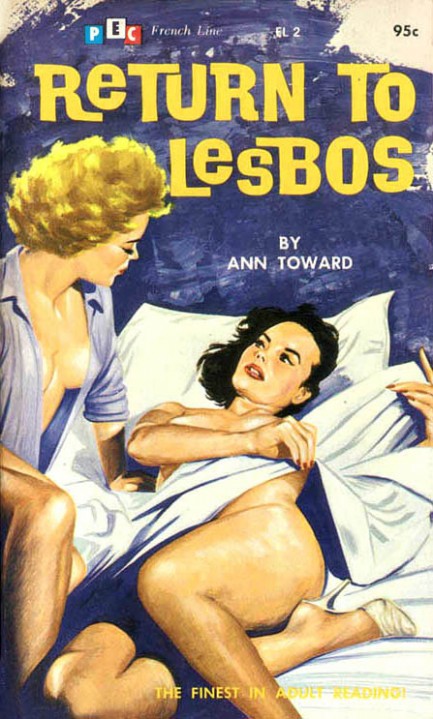
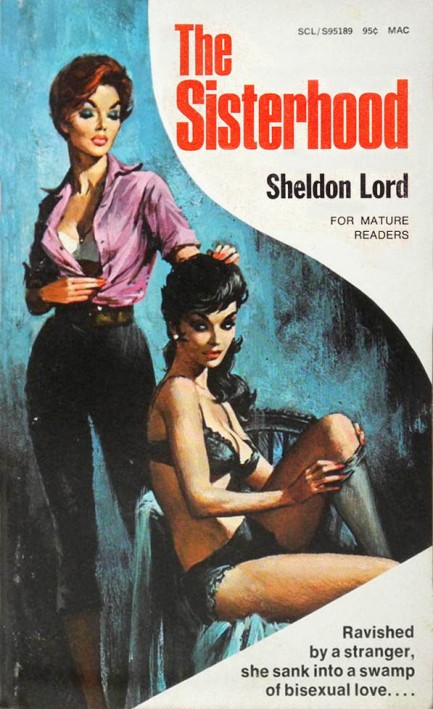
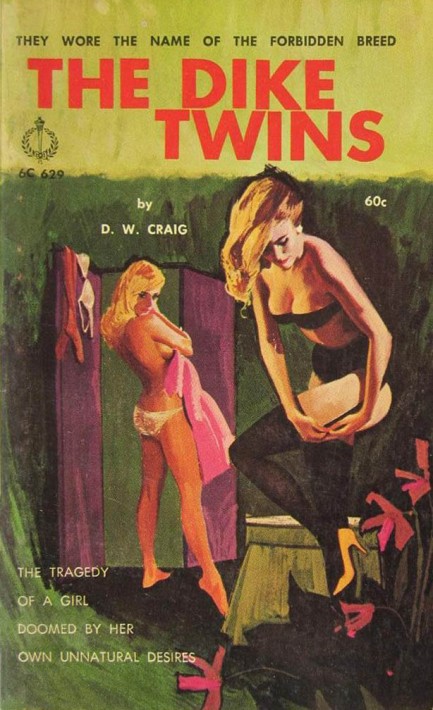
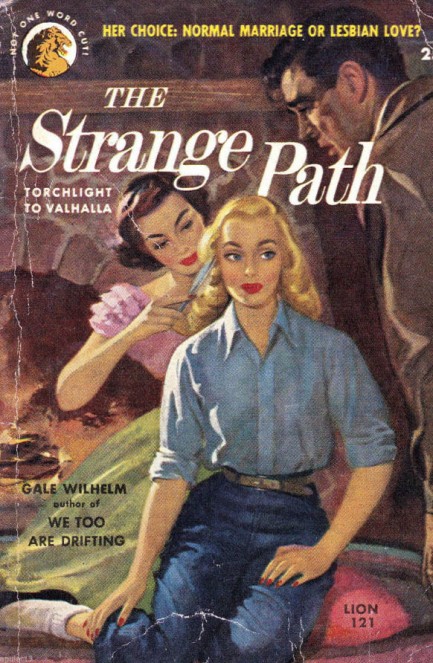
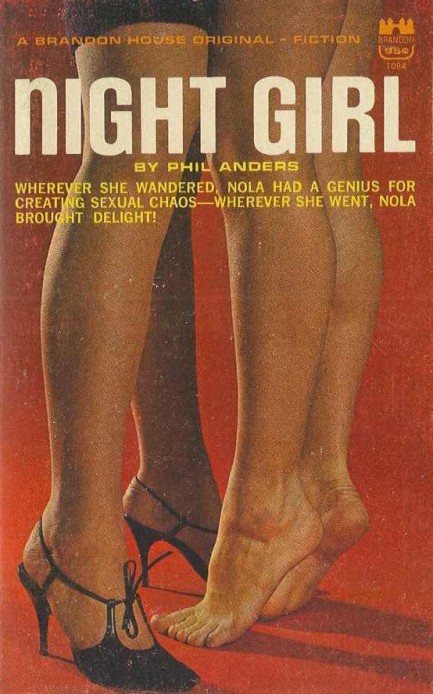
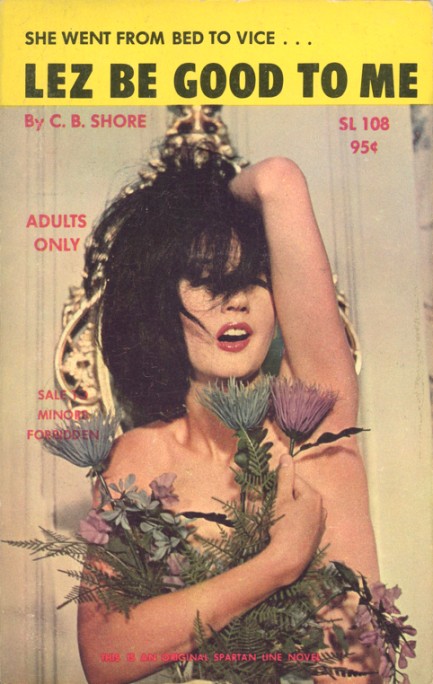
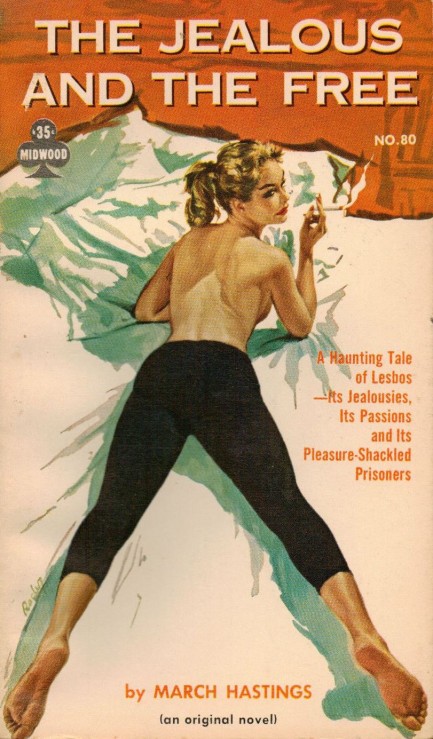
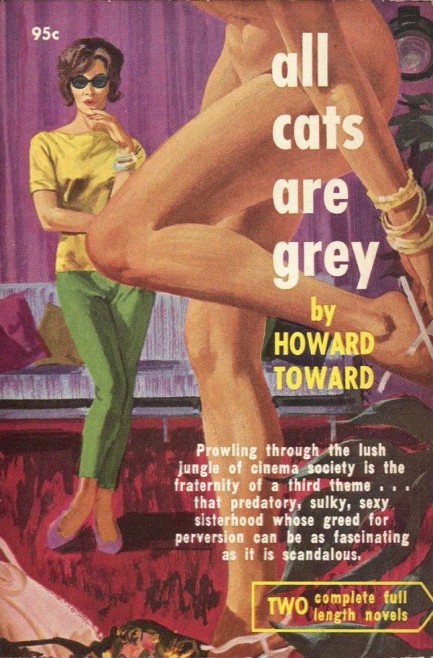
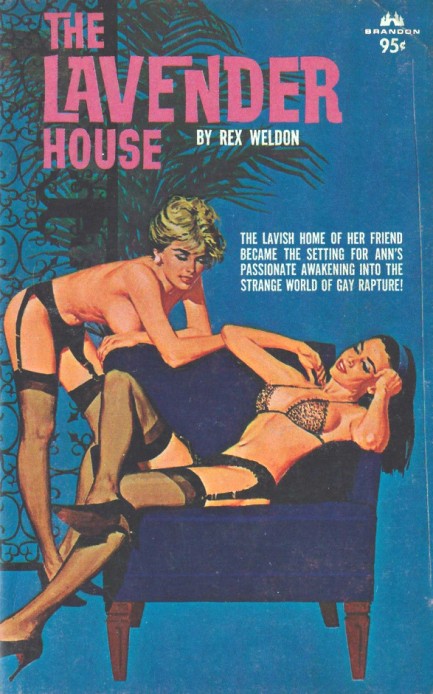
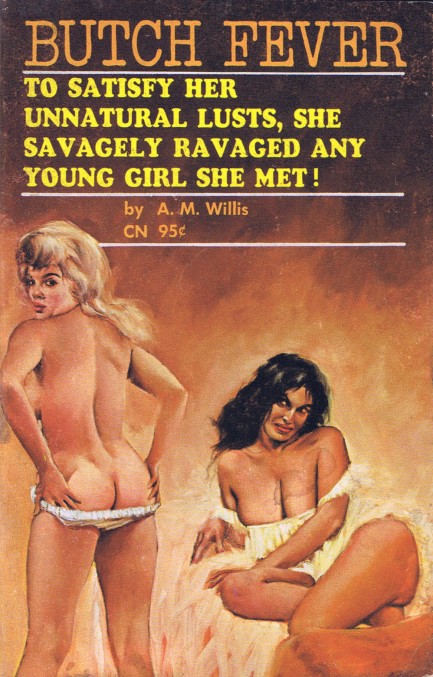
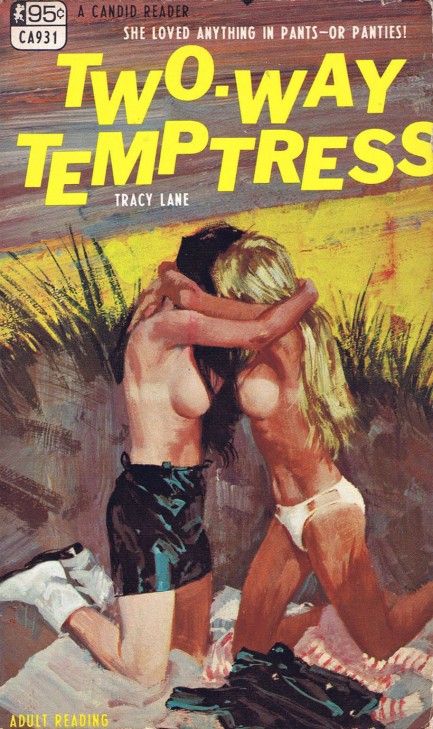

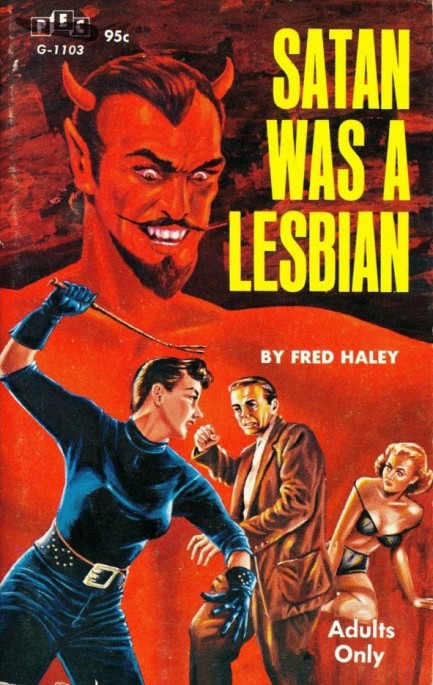
| Vintage Pulp | Sep 28 2015 |

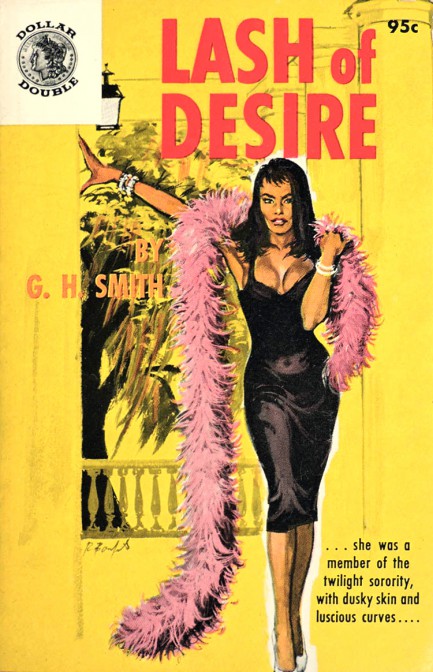
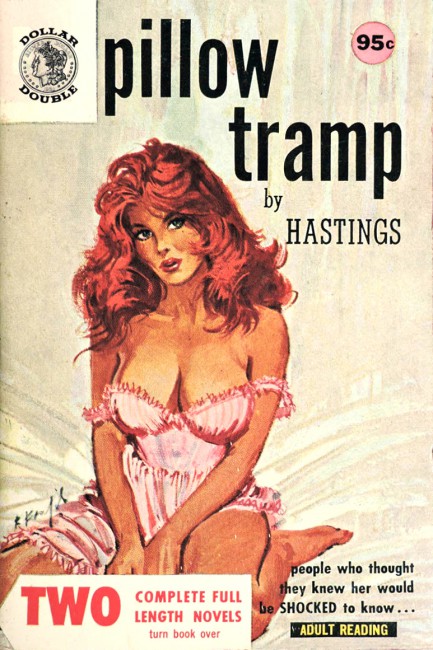
Above is a rare double-sided Robert Bonfils cover, Lash of Desire with a flipside of Pillow Tramp, from the Dollar Double Book Company of Chicago, with both covers featuring a signature—a rarity from Bonfils. G.H Smith was aka M.J. Deer, Jan Hudson, Jerry Jason, Dusty North, et al., and Hastings was aka March Hastings, Laura Duchamp and Sally Singer. The art for Lash of Desire features a confident, challenging female figure, while Pillow Tramp presents a less edgy woman seeming to offer easy pleasures. But of course, all femmes fatales lead to the same result in mid-century sleaze fiction—disaster. A lot of Bonfils’ cover output was for various Greenleaf Classics imprints during the late 1960s and early 1970s, but these efforts from 1962 show him in more conventional form. Compare them to this front, this one, and this one.
| Vintage Pulp | Jul 7 2014 |

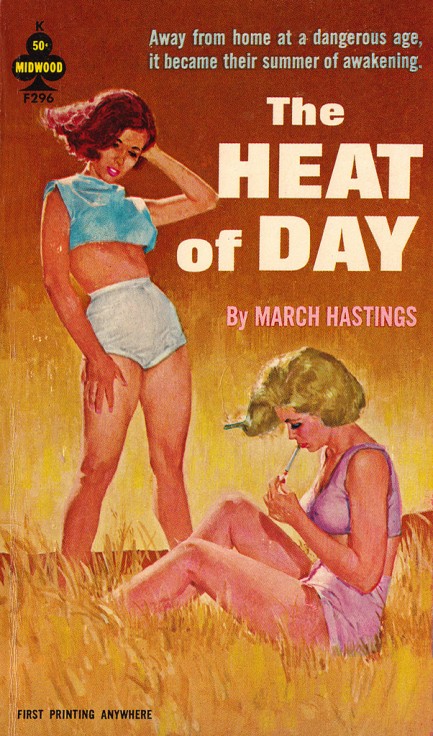
Above, the cover of March Hastings’ The Heat of the Day, one of many lesbian themed novels published by Midwood-Tower. It’s the story of two girls whose blackened skeletons are found in a fire-scorched field. Well, not really. It’s actually about two girls who meet at a summer camp and develop a scorching attraction for each other. 1963 on this one, with art by Victor Olson.
| Vintage Pulp | Dec 3 2008 |

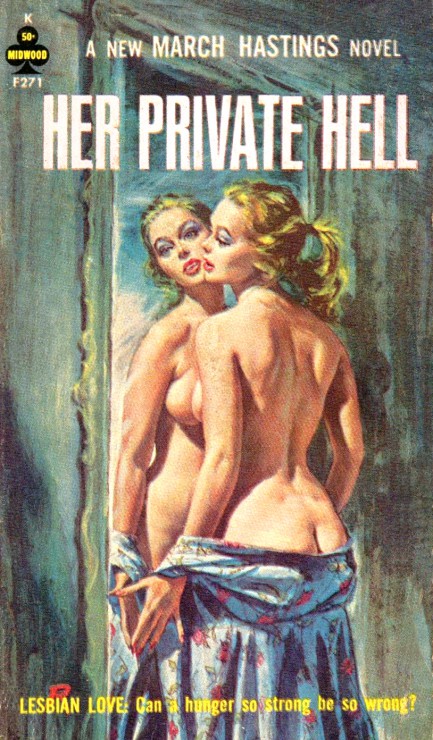
The only thing that could make this cover better is if she were real and not just an amazing painting by Paul Rader. And also if we could substitute the mirror for a window and put ourselves on the other side, hiding in some bushes in her yard. Or is that creepy? Anyway, the cover asks if a hunger so strong can be so wrong. We answer: not if it makes you do this.




































































